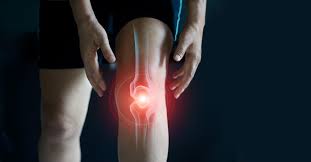What to Expect After Suffering a Torn Meniscus?

One of the most common knee injuries is a torn meniscus. Any activity that involves twisting or rotating your knee can lead to a torn meniscus, especially when putting all your weight on it or making sharp cuts and turns. Each knee has two rubbery, C- shaped pieces of cartilage that sit between the shinbone and the thighbone. These are the meniscus. They serve as shock absorbers for each knee joint. If you suspect you have torn your meniscus, seek medical attention immediately. Sometimes the injury can heal through conservative treatment. Like rest, ice and medication. However, surgery is often recommended to remove or repair the damaged cartilage.
Symptoms
The symptoms of a meniscus tear can vary depending on how severe the injury is. If the tear is minor, you may only notice a little pain and swelling. A minor tear will usually heal on its own within two or three weeks. If the tear is more severe, you may notice a popping feeling where the meniscus is torn and pain in the center or the sides of the knee. You may also have difficulty fully straightening your knee and feel like your knee is going to give way when standing.
Causes
Athletes and anyone performing activities that involve forceful twisting and pivoting of the knee is at risk of suffering a torn meniscus. Even squatting or lifting heavy things can lead to a torn meniscus sometimes.
Diagnosis
To diagnose a torn meniscus, your doctor will likely first administer a physical exam to see if they can identify the injury. Because the meniscus is made of cartilage, it won’t show up on X-rays. But X-rays are sometimes used to help rule out other knee injuries if necessary. MRIs, on the other hand, can produce detailed images of the soft tissues in your knee, so it is the best way to detect a torn meniscus. In certain situations, your doctor may use an arthroscope to examine the inside of your knee. This instrument is a small camera that is inserted through a small incision near your knee to transmit an enlarged image of the inside your knee onto a screen.
Treatment
Following a torn meniscus, conservative treatment methods will usually be used first, depending on the type and size of your tear. This will likely include rest, ice, and medication. It is necessary to avoid any movement that aggravates your pain. If your pain is severe, it may be recommended to use crutches to keep weight off your knee. Ice and over-the-counter pain relievers help reduce pain and swelling. Physical therapy is also a great way to strengthen the muscles around your knee and leg to gain more support and stability in your knee joint.
Surgery
Following a torn meniscus, conservative treatment methods will usually be used first, depending on the type and size of your tear. This will likely include rest, ice, and medication. It is necessary to avoid any movement that aggravates your pain. If your pain is severe, it may be recommended to use crutches to keep weight off your knee. Ice and over-the-counter pain relievers help reduce pain and swelling. Physical therapy is also a great way to strengthen the muscles around your knee and leg to gain more support and stability in your knee joint.
Featured Clinician: Anthony Maritato, PT
FEATURED CLINICIAN: Anthony Maritato, PT Anthony Maritato, PT, MSPT, is a licensed physical therapist and co-founder of Total Therapy Solutions, a private practice outpatient physical therapy business that focuses on
Colleen Rapp Wins Friend of Private Practice Award
Long time patient advocate, Colleen Rapp, was awarded the APTA Private Practice Section’s Friend of Private Practice Award during the 2022 PPS conference. Colleen has long been standing up for
Top Tips for Relieving Nerve Pain
Top Tips for Relieving Nerve Pain If you suffer from nerve or neuropathic pain, then you can certainly attest to how it can throw a wrench in your day-to-day routine.
How Your Diet Can Cause Inflammation
How Your Diet Can Cause Inflammation Depending on the situation, inflammation can be a good thing or a bad thing. It is good in that it is your body’s way
What to Avoid After Knee Replacement Surgery
What to Avoid After Knee Replacement Surgery Knee arthroplasty, otherwise known as knee replacement surgery, is designed to relieve pain and restore function in severely diseased knee joints. No matter
How Physical Therapy Can Help You Avoid Reliance on Pain Medications
How Physical Therapy Can Help You Avoid Reliance on Pain Medications If you suffer from chronic pain, you know how managing pain can be a real challenge. Another day, another
Kyle Yancey
Latest posts by Kyle Yancey (see all)
- Top Tips for Relieving Nerve Pain - October 28, 2022
- How Your Diet Can Cause Inflammation - October 25, 2022
- What to Avoid After Knee Replacement Surgery - October 19, 2022
- How Physical Therapy Can Help You Avoid Reliance on Pain Medications - October 13, 2022
- Physical Therapy for Heart Disease - October 11, 2022
